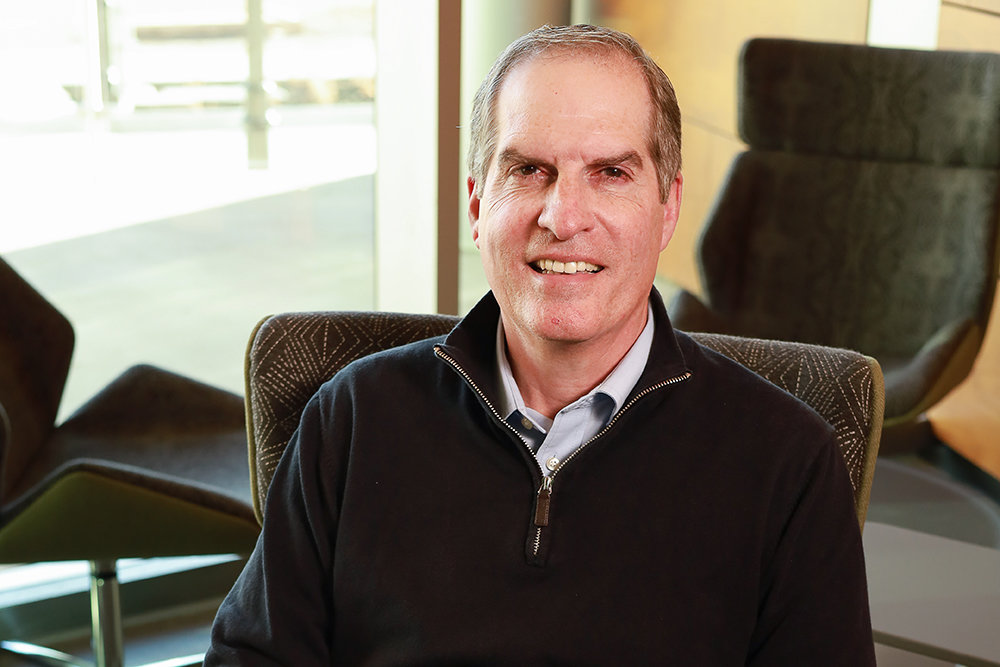YOUR BUSINESS AUTHORITY
Springfield, MO
YOUR BUSINESS AUTHORITY
Springfield, MO

JVIC is in the midst of expanding its facility and has purchased city property nearby for a new facility. In the current building, what’s the status of construction?
The public entrance should be open by the end of the year. At the same time, we’re doing our tenant infill. Both the first and second floors are under construction now. The first floor will be the [Missouri] Cybersecurity Center of Excellence, and the second floor, Brewer Science, is expanding. Those two spaces will not be occupied until probably mid next year. The third floor of the new building is not occupied yet, but we are talking to several companies that we want to try to bring in. The cybersecurity group on the first floor of the expansion is exciting. Whether you’re in health care or education, everybody’s trying to protect their systems. We have a great cybersecurity center on campus, and we produce great graduates, but when you go to work for an industry, you also make industry certifications in cybersecurity. If you go work for Jack Henry, Jack Henry’s going to spend six, eight, nine months to a year training you to get all of the industry certifications in the cybersecurity arena. We wanted to create a center that will do that for students – not only take their classes and get their degree, but then they can be in this operations center doing real-world work toward these industry certifications. Some of those small businesses and nonprofits can’t afford to go hire cybersecurity firms to do penetration tests to protect their systems, but they can hire a nonprofit that uses students to go protect their systems. We’re all susceptible to cybersecurity threats, and we need to make sure your systems are protected.
What are some of the research projects being conducted within JVIC?
Right now, we have a couple with the Army; both involve us as well as Brewer Science. One is a water sensor project, and one is a gas sensor. They’re real-time sensors to detect water toxins. The gas sensors are similar, detecting carbon monoxide, carbon dioxide and methane. We have engaged some professors and students in those operations, as well. We also have a partnership with the University of Missouri-Columbia doing a project with the U.S. Geological Survey looking at developing a handheld oil spill detection system using ultraviolet fluorescence detection.
What kind of technology is housed within JVIC facilities?
Our most recent addition is braiding composite materials. The new building across the street that’s going up now is a large manufacturing facility for composite braiding. We have a contract with the Air Force and a company called Physical Sciences Inc. We are making components of hypersonic vehicles. We have a prototype braider right now in our current building; it’s roughly 6 feet in diameter. We were able to prove different concepts, different technologies, but to expand to the level we need to expand to make bigger components and different kinds of components, we’re building a new facility that will house a braider about 24 feet in diameter. One component of that building will be a training lab. That’s one of the requirements of some of the state funding we got to support that project is we made a commitment to train the advanced workforce that works in the composite industry and the braiding industry. That should be done by next July. Composite braiding has been around for a while, but our differentiator is the materials we’re using, the components we’re making and the design of the carriers that are on the braider. If you can imagine a big wheel that spins, the carriers funnel the thin composite material and it braids it, basically. The design of that carrier is unique, so we have some intellectual property regarding that.
What’s the investment for the expansion of the current facility and the new manufacturing facility?
The expansion is roughly $15 million. The braider facility is roughly $5 million. It’s a combination of state funds, university funds and county [American Rescue Plan Act] funds.
JVIC has a foot in the world of education and the world of business. Seeing both sides, what are you hearing from businesses about the demand and need for talent in technology industries?
The key thing is innovation. Innovation drives everything. Having students exposed to innovation, exposed to the opportunities to stay in Springfield to earn a higher-than-average wage through the technology areas that we focus on here. But there’s not enough talent. We’re here to make sure we grow the talent we have, the expertise we need – try to meet our employers’ needs. The more students we can engage in these areas of material science and engineering and chemistry and biology and all the STEM areas is better for us. Just like any other industry that’s out there right now, workforce is a challenge, but we’re trying to make sure that the university is producing a high-quality workforce for them to hire.
Cedars Family Restaurant has cooked up comfort for over three decades.
Aquatic center fronting Sports Town in the works
STL construction firm buys KC company
Spring 2024 Construction in the Ozarks
SPD issues 36 citations to businesses for violating city’s gaming machine ban
Lost & Found Grief Center hires executive director
Nixa spokesperson takes job with city of Joplin
Missouri House speaker accused of obstruction in ethics probe